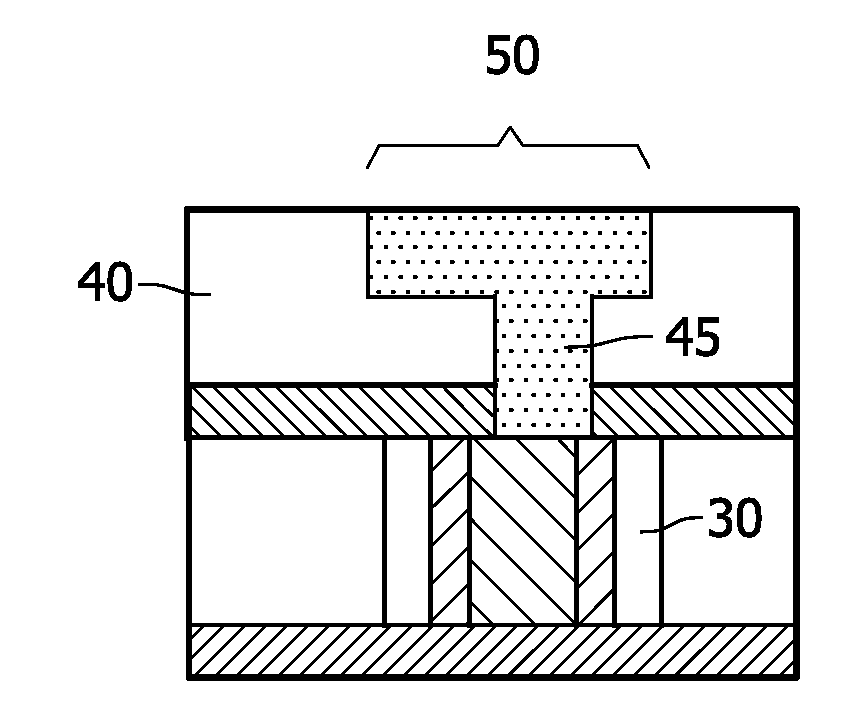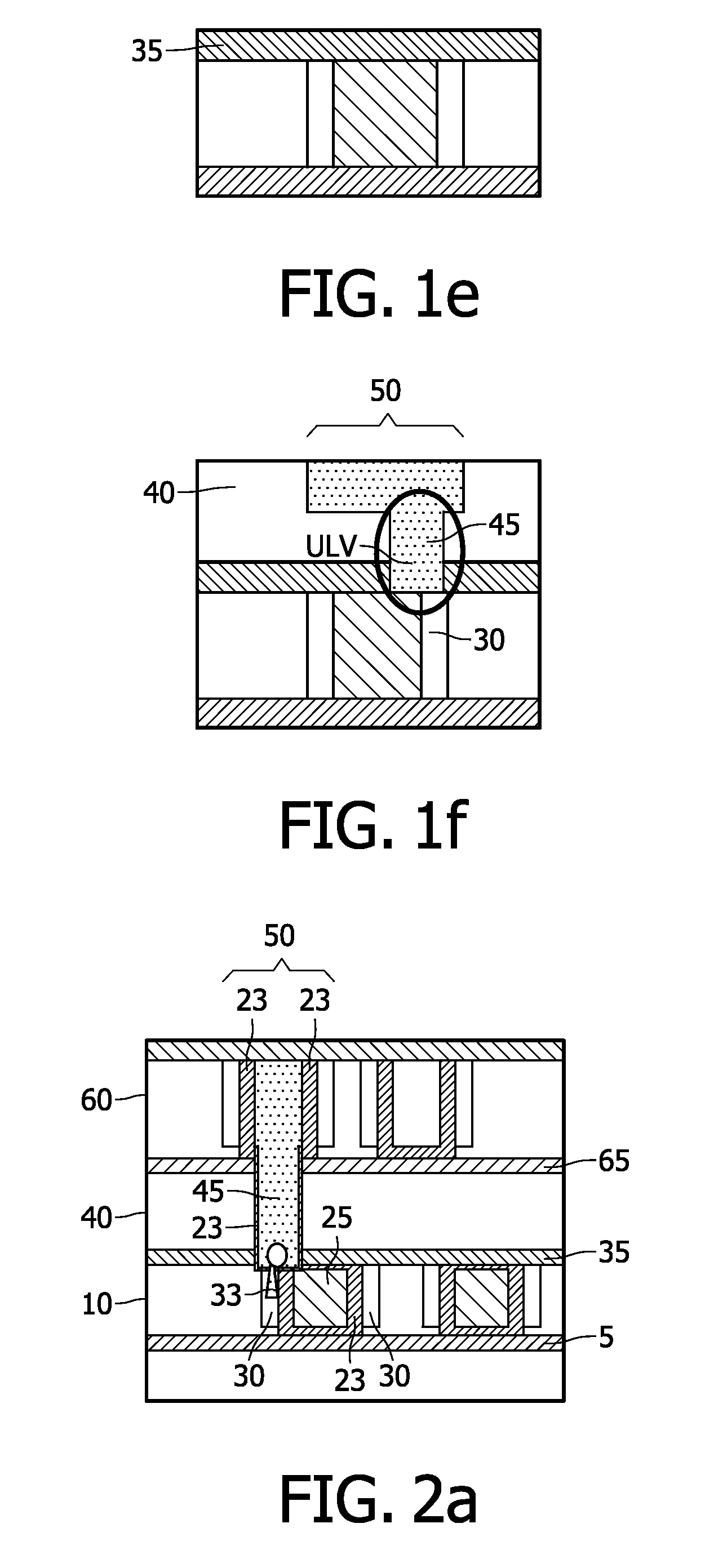Semiconductor device and method of manufacturing thereof
a technology of semiconductor devices and semiconductors, applied in semiconductor devices, semiconductor/solid-state device details, electrical apparatus, etc., can solve problems such as increasing the resistance of conductive structures, and achieve the effect of reducing the resistance of conductors
- Summary
- Abstract
- Description
- Claims
- Application Information
AI Technical Summary
Benefits of technology
Problems solved by technology
Method used
Image
Examples
first embodiment
[0060]FIGS. 4a to 4h illustrate the method of manufacturing a semiconductor device according to the invention. This embodiment will be mainly discussed as far as it differs from the known method as illustrated in FIGS. 1a to 1f.
[0061]The stage of the method according to the invention as illustrated in FIG. 4a is similar to the stage of the known method in FIG. 1a.
[0062]The stage of the method according to the invention as illustrated in FIG. 4b is similar to the stage of the known method in FIG. 1b.
[0063]Referring to FIG. 4c, in this stage an insulating spacer layer 21 is provided on the insulating layer 10 and on all walls of the opening 15. The thickness of this insulating spacer layer 21 determines the width of the insulating sidewall spacers 22 which will be formed later. The insulating spacer layer 21 can be provided using conventional deposition techniques like CVD, ALD, spin-on coating etc. Referring to FIG. 4d, in this stage the insulating sidewall spacers 22 are formed b...
second embodiment
[0071]Various variations of the method are possible. The first and the method can even be combined without any problems.
[0072]Although the given examples in FIGS. 1f, 4h and 5g present a dual-damascene interconnect layer 40, 45, 50, the invention can be easily applied in single-damascene processes as well.
[0073]Also, the invention is applicable in both complete airgap configurations, as well as partial airgap configurations. One way of creating full airgap configurations is to implement the insulating layer 10 as a fully as a sacrificial layer.
[0074]As an alternative to the methods illustrated in FIGS. 4a to 4h and FIGS. 5a to 5g it is also possible to provide the sacrificial regions 20 (or the complete insulating layer, when complete airgaps are desired) as a thermal degradable material. The formation of the airgaps 30 may then be done by thermal degradation of the thermodegradable material.
[0075]The invention thus provides a semiconductor device comprising:[0076]a substrate, the s...
PUM
 Login to View More
Login to View More Abstract
Description
Claims
Application Information
 Login to View More
Login to View More - R&D
- Intellectual Property
- Life Sciences
- Materials
- Tech Scout
- Unparalleled Data Quality
- Higher Quality Content
- 60% Fewer Hallucinations
Browse by: Latest US Patents, China's latest patents, Technical Efficacy Thesaurus, Application Domain, Technology Topic, Popular Technical Reports.
© 2025 PatSnap. All rights reserved.Legal|Privacy policy|Modern Slavery Act Transparency Statement|Sitemap|About US| Contact US: help@patsnap.com



